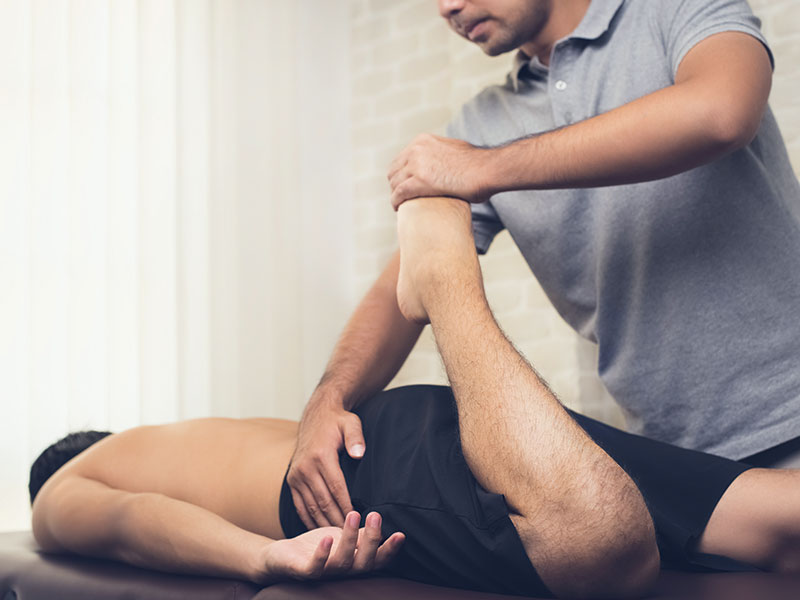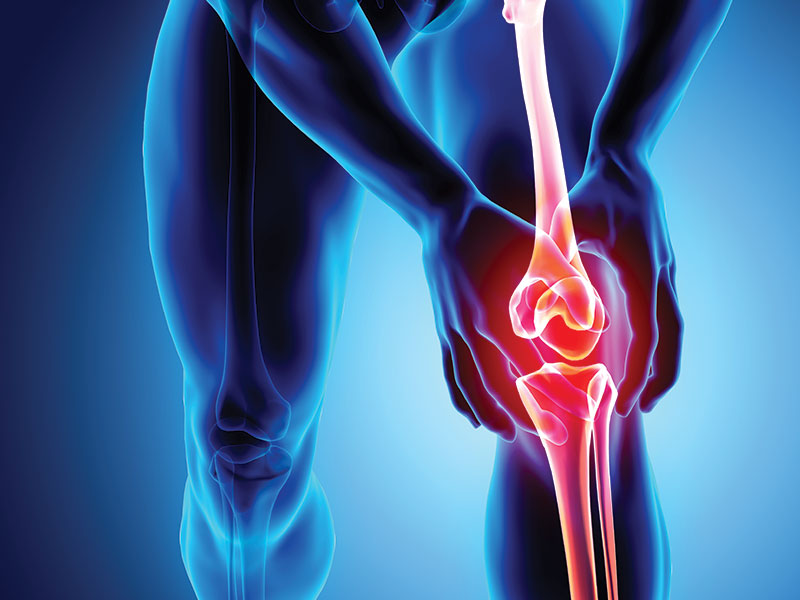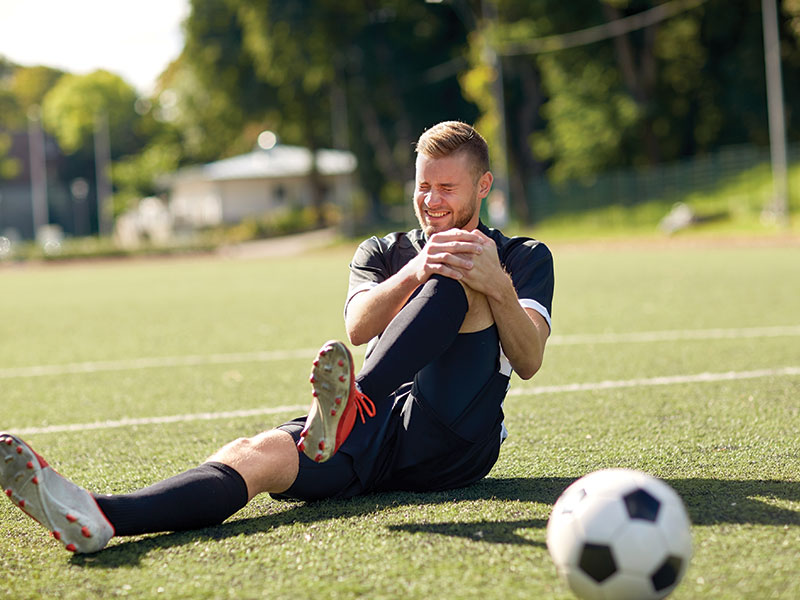Knee Pain
All of our Physiotherapists are specialists in assessing all the knee structures and are experienced in all special testing to diagnose your condition. We will advise you whether a knee scan is also necessary.
Take confidence that our Physiotherapists will be able to advise you of the treatment that you require.

The knee is a complex joint with many components, the forces the knee sustains in activity make it vulnerable to a variety of injuries and also accelerates wear and tear if the knee is not functioning optimally. Many knee injuries can be treated successfully with simple measures, such as bracing and rehabilitation exercises specific for the condition.
The Knees Seven Key Structures
Bones there are three bones meet to form your knee joint, your thighbone (femur), shinbone (tibia), and kneecap (patella).
Articular Cartilage the ends of the femur and tibia and under surface of the patella are covered with articular cartilage. The function of cartilage is to produce a smooth glide between bones as they articulate.
Meniscus are two pieces of wedge shaped cartilage that act as shock absorbers and spacers between the long bones. The meniscus is a tough rubbery cushion that stabilises the joint.
Ligaments are fibrous bands that connect and provide support holding the bones together forming the knee joint. Ligaments are a strong band that combine to keep the knee very stable.
Collateral Ligaments border the inside and outside of the knee holding the knee together.
Cruciate Ligaments are found within the knee joint, they cross between the long bones forming a “X” with a cruciate ligament from the front and a cruciate ligament in the back. They control the back and forth sliding motion between the long bones.
Tendons connect muscle to the bone. The quadriceps tendon connects the muscles from the front of your thigh to your patella and the act of the quadricep muscle is to straighten the knee. Behind the knee the hamstrings and calf muscle tendons cross connecting at the back of the knee. The hamstrings bend the knee.
There is a multitude of various knee conditions associated with the above mentioned structures, some of these conditions have similar symptom patterns so it is important to have your knee assessed thoroughly to specify the correct line of treatment.


Seven Common Knee Injuries
- Fractures and broken bones
- Dislocation
- Anterior Cruciate Ligament (ACL) injuries
- Posterior Cruciate Ligament (PCL) injuries
- Collateral Ligament (MCL, LCL) injuries
- Meniscal Tears
- Tendon Tears
Exercise Physiology, Clinical Pilates & Sports Physiotherapy in Sydney
ES Physiotherapy has holistic physiotherapy practices in Kingsford, Randwick & Bondi Junction with a focus on outstanding care, individualised treatment and injury prevention, so you recover quicker.

